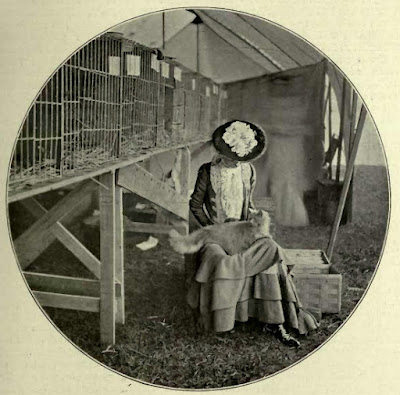In the 19th century there was a mania for dog breeding and
dog shows. Dogs proved to be ‘plastic’
when it came to manipulating their size, shape, and general appearance, which
leant itself to the Victorian desire to control everything around them. Cats,
however, were not so obliging
For those ambitious cat owners who wished to exhibit their pet in a cat show and have other people appreciate them, their first problem was to devise categories
within which to classify the cats. For dogs this was easy because there were
distinct breeds ranging in size from a tiny Yorkshire terrier up to a giant Newfoundland. Not so for cats.
It was ever the bane of the Victorian pet keeper that cats defied their
master’s (or mistresses – as cats were far more likely to be kept by women)
wishes. Cats had a habit of breeding willy-nilly and behind their owner’s back,
which made manipulating matings to produce a specific look all the more
difficult. Indeed, Charles Darwin himself said as much in 1868.
Darwin noted that people’s effort to alter the appearance of cat’s had
done – “…nothing by methodical selection, and probably very little by
unintentional selection…” except to save the cutest kittens and destroy adult
cats that poached gamebirds.
Thus it was accepted that the aspiring cat breeder was actually rather
deluded, and that even if they created a stunning cat with wonderful potential,
it could all go to pot with the next generation. This was also reflected in the
price of purebred kittens, where £1-2 was considered a high price for a kitten “Good
enough to win a first-class exhibition.”
However, the lack of diversity in the size and appearance of cats did
not deter cat fanciers. On July 16, 1871, the first ever cat show took place.
Held at Crystal Palace, it was organized by a well-known writer on animal topics and illustrator, Harrison Weir. His objective for the show was to raise
awareness of the “Different breeds, colors, markings etc.”
Despite Weir’s best intentions, the main method he hit upon of
distinguishing the different categories of cats was color. Even so, the show
was a success and within ten years, many of the larger cities followed his
example and could “boast of an annual exhibition of feline favorites.”
Next week we look at the categorization of cats at cat shows and the
vagaries of fashion.






Love, love your blogs, Grace!
ReplyDelete